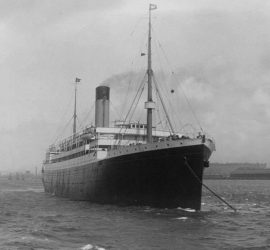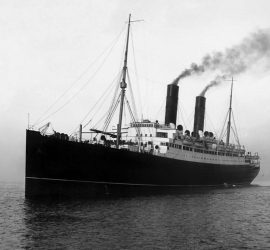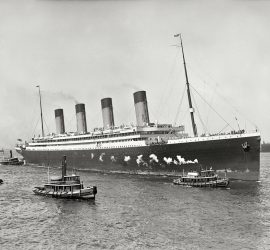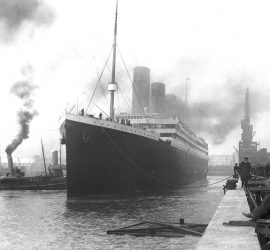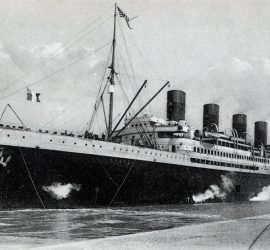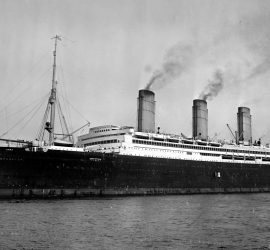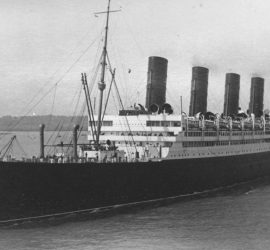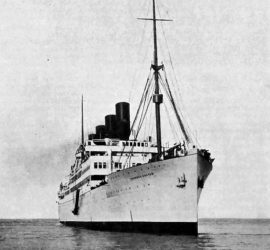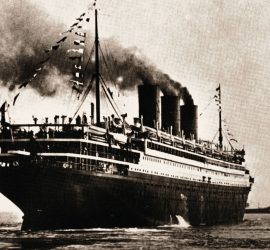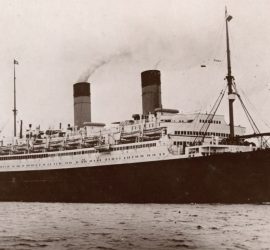1909 – 1933 / The second part in the test that would determine the engines of the Olympic-class, the Megantic was less efficient but more fortunate than her sister. She survived wartime duties, returned to civilian traffic and was eventually scrapped in Japan.
Daniel Othfors
1911 – 1916 / Commissioned as a slightly less glamorous support ship to her larger fleet mates, the Franconia served her Cunard owners well until she was torpedoed and sunk off Malta during World War I.
1911 – 1935 / The first and most prosperous of White Star Line’s amazing trio, the Olympic would serve in both peace and war, eventually earning the nickname ‘Old Reliable’.
1912 / The second of the Olympic-class trio, the name Titanic would become synonymous with hubris and tragedy when she struck an iceberg and went down on her maiden voyage, resulting in great loss of life.
1912 – 1935 / As the only French liner to sport four funnels, the second France was also noteworthy for her lavish interiors. She survived World War I, serving as an auxiliary cruiser, a troop transport and a hospital ship.
1913 – 1938 / Also known as Berengaria / The first of Germany’s great pre-war trio, their defeat in World War I saw the ship transferred to Cunard ownership and given a new name. She flew the British flag for the rest of her career, and was sold to Jarrow shipbreakers in 1938.
1914 – 1950 / A unique vessel in the Cunard fleet, the Aquitania was commissioned as a larger but slightly slower companion to the Mauretania and Lusitania. She enjoyed a long, profitable career and saw military service in two world wars.
1921 – 1958 / As a four-funnelled ship not on the North Atlantic run, Union-Castle Line’s Arundel Castle was of a rare breed. She was later rebuilt with two funnels, and served profitably for almost four decades before being scrapped.
1921 – 1947 / Another CGT masterpiece, the Paris followed the company line in offering comfort and amenities rather than speed. Unfortunately, she suffered fires two times in her life, the second of which led to her capsizing in port shortly before World War II.
1922 – 1936 / Also known as Columbus / Originally a German ship, her construction was interrupted by World War I. Handed over to White Star after the war and renamed Homeric, it took several more years to complete her. She then served as a British ship for a little more than a decade, before being sent to the breakers.

